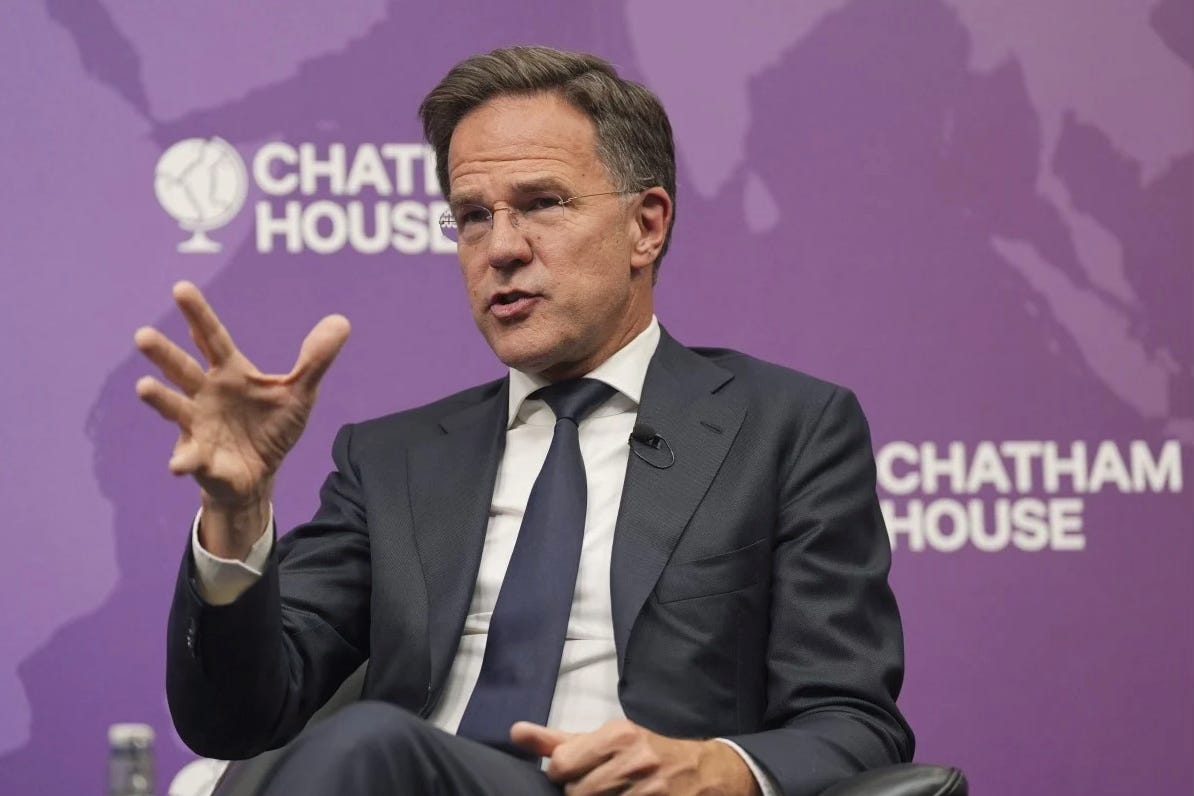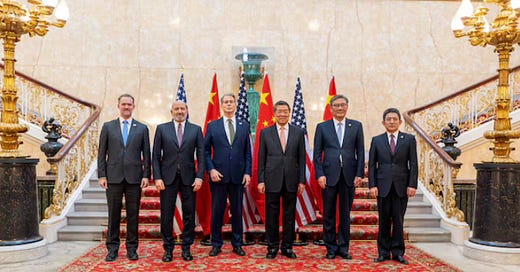US-China Trade Talks Resume in London
Beijing's rare earth export controls loom large as Trump seeks deal to end tariff row.
Top US and Chinese officials are meeting for a second day of trade talks in London on 10 June, with export controls over rare earth minerals and semiconductors at the center of an economic standoff between the world’s two largest economies.
The negotiations follow President Donald Trump’s imposition of punitive trade tariffs on China earlier this year and demands for a reduction in the US’s trade imbalance with China.
The two sides began talks in Geneva last month, but tensions soon flared over Beijing’s restrictions on exports of key materials used in electric vehicles, aerospace, semiconductors, and defense. Washington accused Beijing of holding back rare earth shipments in violation of a handshake agreement in Geneva. Beijing cited newly imposed US curbs on chip design software, visas for Chinese students, and airplane parts.
President Trump and Chinese President Xi Jinping spoke last week by phone at Trump’s request to get the trade talks back on track.
US Treasury Secretary Scott Bessent, Commerce Secretary Howard Lutnick, and Trade Representative Jamieson Greer are leading the American delegation. China’s team is headed by Vice Premier He Lifeng, Commerce Minister Wang Wentao, and International Trade Representative Li Chenggang.
Reports say China has granted temporary export licenses to key US automakers. But global manufacturers remain anxious about supply disruptions.
China's exports to the US plunged 34 percent in May, the steepest drop since the onset of the COVID-19 pandemic, adding urgency to the talks. Both sides are expected to issue statements following Tuesday’s sessions, according to reporters covering the talks.
Beijing Projects Carrier Force
China’s Liaoning and Shandong aircraft carriers conducted military exercises over the weekend east of Taiwan and in waters near Japan’s Iwo Jima Island for the first time.
The Chinese military drills featured more than 20 warships with fighter jets and helicopters launching from the carriers and were closely monitored by Japan’s military.
‘They are trying to enhance their operational capabilities in far territories,’ Japan’s Chief Cabinet Secretary Yoshimasa Hayashi told reporters, adding that the Japanese government had delivered an ‘appropriate message’ to Beijing.
The Chinese maneuvers signal an extension of China’s naval reach into the waters southeast of Japan, which could be critical in any future conflict over Taiwan.
China’s Foreign Ministry defended the deployment, calling it ‘fully consistent with international law and practice.’ China has two operational aircraft carriers. A third is expected to enter service soon. Six more are under construction.
‘China is actually speeding up its push to turn the area inside the first island chain into what it sees as its own inland sea,’ an unnamed Taiwanese official told the Wall Street Journal.
NATO Warning
NATO’s Secretary General Mark Rutte said in a speech in London on 9 June the alliance is concerned about links between the Russia’s war in Ukraine and the potential conflict in the Pacific.
‘What we see at the moment is an enormous build-up in China of their military capabilities,’ Rutte said.

‘We cannot think that there is one theatre, which is the Euro-Atlantic theatre,’ he said. ‘We have to be conscious of the fact that this is all interconnected with what is happening in the Pacific.’
Speaking at the Shangri-La Dialogue in Singapore in May, US Defense Secretary Pete Hegseth warned the US would respond to any attempt by Beijing to take Taiwan by force. ‘The threat China poses is real,’ Hegseth said.
US Charges Russian Crypto Bro
The US charged Iurii Gugnin, a Russian national, with laundering more than $500 million and helping sanctioned Russian entities evade export controls using cryptocurrency.
Gugnin, 38, was arrested in New York on 9 June. He faces multiple charges, including wire fraud, bank fraud, money laundering, and conspiracy. He is accused of using his US-based companies, Evita Investments and Evita Pay, to process crypto transactions that obscured the origin of funds tied to Russian banks under US sanctions.
Prosecutors allege Gugnin converted cryptocurrency from foreign clients into US dollars through American bank accounts, enabling purchases of electronics and other goods while concealing the source of the funds and the identities of the buyers.
‘The defendant is charged with turning a cryptocurrency company into a covert pipeline for dirty money, moving over half a billion dollars through the US financial system to aid sanctioned Russian banks and help Russian end-users acquire sensitive U.S. technology,’ John A. Eisenberg, assistant attorney general for national security, said in a statement.





